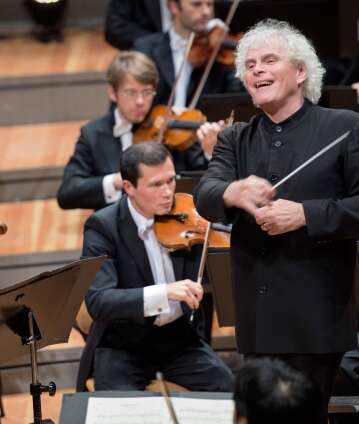Simon Rattle conducts Beethoven’s Symphonies Nos. 1 and 3

Performing all the Beethoven symphonies is always a unique project. After a first series in 2008, the Berliner Philharmoniker and Simon Rattle presented their interpretation once again in October 2015. The starting point is the First Symphony, whose dissonant opening chord already announces the exciting individuality of the cycle – before the fierce Eroica conclusively breaks with all musical standards of the time.
Over just five years, Ludwig van Beethoven undertook a long journey from his First Symphony to the Eroica. The starting point of this significant music historical development, beginning with the C major Symphony composed in 1799-1800, were the models of the late Haydn Symphonies, at that time the measure of all things with their balanced form, rich contrasts and individual characteristics.
Although Beethoven took over many of these patterns in his First Symphony, the idea of what is considered symphonic is re-defined here. This can already be heard in the dissonant seventh that initiates the work: until then there had never been a comparably exciting beginning. It seems as if Beethoven wanted to make unmistakably clear with this first measure that he would start the genre afresh at the beginning of the new century.
Sir Simon Rattle follows up the C major Symphony in his Beethoven cycle with the Eroica, once and for all breaking with all his contemporaries’ expectations. That’s because in this work Beethoven exceeded the limits of the convention on the “new path”, as he designated it in unprecedented clarity, with a music which nowhere repudiated the storehouse of intonation from the world of sound of the French Revolution and Napoleon’s victories, with numerous echoes of official commemorative hymns and funeral marches of the first French republic.
In so doing, the Eroica does not follow the tradition of the battaglia and battle symphonies, the genre to which Beethoven later made his own contribution with the tone poem Wellington’s Victory or The Battle of Vittoria op. 91. Instead the heroic inflection, similar to the Grande Sinfonie caractéristique pour la paix avec la République françoise written by Mozart’s contemporary Paul Wranitzky in 1797, professes a worldview that achieves universal significance without respect to the specific political context of the time.
© 2015 Berlin Phil Media GmbH